15 Can I use this image?
Copyright and Creative Commons
Generally, a student or professor can use an image found on the internet for educational purposes under The Copyright Act if certain conditions are met. The material was legally posted by the copyright owner or with their consent; there is no “clearly visible notice” on the website prohibiting users from educational use of the content and the material is not protected by a digital lock. The image still requires an attribution statement.
However, using creative commons licensed or public domain images is recommended. Using creative commons and public domain images and providing appropriate attributions gives us an opportunity to model ethical behaviour (not stealing images from the internet) and giving credit to others for their work (academic integrity).
What is Creative Commons?
When an author creates a work, Canadian law automatically grants them full “copyright” over their work. This means that no one may copy their work or make changes to it, except with the author’s express permission, or in accordance with the user rights granted by the Copyright Act (e.g., fair dealing). Put another way, if you want to use a work in a way that doesn’t qualify as a user right, you can only use the work as permitted by the copyright owner. The granting of permission is referred to as “licensing.” Some copyright holders restrict all rights to their work, and so you have to ask their permission to use their work. Others, however, proactively offer their work to the public on standard terms that allow anyone to use their work so long as certain terms and restrictions are complied with. Creative Commons licenses are a prominent example of this proactive licensing.
Creative Commons is a non-profit organization whose mandate is to make it easier for creators to share their work and/or build upon the works of others consistent with the rules of copyright. They have created standard, easy to use and understand copyright licenses that anyone can apply to their work to allow others to share, remix, or use the work without having to contact the copyright owner to ask for permission. There are several Creative Commons licenses, each with a different level of use restrictions.
Creative Commons licenses are not an alternative or exception to copyright, they are one way for copyright owners to distribute their work within the copyright framework.
Understanding the Different Creative Commons Licenses
Creative Commons offers six different licenses that allow copyright holders to apply different restrictions to how their work may be reused. When using a specific CC-licensed work, it is important to pay attention to the CC license and its restrictions. All Creative Commons licenses require attribution. The specific types of Creative Commons licenses are:
Attribution

CC BY This license lets others distribute, remix, tweak, and build upon the work, even commercially, as long as they credit the creator for the original creation. This is the most flexible and accommodating of the available Creative Commons licenses. Recommended for maximum dissemination and use of licensed materials.
Attribution-NoDerivs
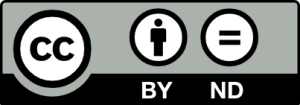
CC BY-ND This license allows for redistribution, commercial and non-commercial, as long as the licensed work is passed along unchanged and in whole, with credit to the creator.
Attribution-NonCommercial
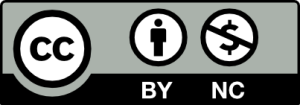
CC BY-NC This license lets others remix, tweak, and build upon the work non-commercially, and although their new works must also acknowledge the creator and be non-commercial, they don’t have to license their derivative works on the same terms.
Attribution-ShareAlike
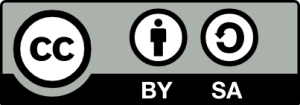
CC BY-SA This license lets others remix, tweak, and build upon the work even for commercial purposes, as long as they credit the creator and license all-new creations under identical terms. This license is often compared to “copyleft” free and open-source software licenses. All new works based on yours will carry the same license, so any derivatives will also allow commercial use. This is the license used by Wikipedia and is recommended for materials that would benefit from incorporating content from Wikipedia and similarly licensed projects.
Attribution-NonCommercial-ShareAlike
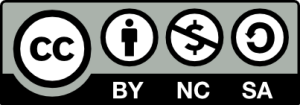
CC BY-NC-SA This license lets others remix, tweak, and build upon your work non-commercially, as long as they credit the creator and license their new creations under identical terms.
Attribution-NonCommercial-NoDerivs
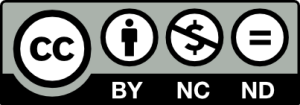
CC BY-NC-ND This license is the most restrictive of the six main licenses, only allowing others to download your works and share them with others as long as they credit the creator, but they can’t change them in any way or use them commercially.
Other Licenses
There are two other common licenses used for works where attribution is not required by recommended.
Creative Commons Zero
CC0 (aka CC Zero) is a public dedication tool, which allows creators to give up their copyright and put their works into the worldwide public domain. CC0 allows reusers to distribute, remix, adapt, and build upon the material in any medium or format, with no conditions.
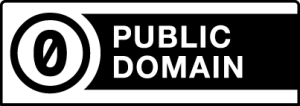
Public Domain

Public Doman icon by Creative Commons, CC BY Works in the Public Domain are not covered under any exclusive intellectual rights. These rights may have expired, forfeited, or waived. For example, books may enter the Public Domain 70 years after the authors’ death in most countries. Project Gutenburg and the Internet Archive are sources of Public Domain books.
Giving Attribution
When you use an image with a Creative Commons license, you have to give credit or attribute it in a particular way. Attributing just means saying what the work is, who made it, where it is from, along with what license it is used under.
The acronym TASL can help us remember what to include.
- Title of the image
- Author or creator of the image
- Source of the image. Where is it from?
- The license of the image
In some cases, such as with Creative Common Zero licenses on image collections, there may be a suggested attribution statement that you can copy.
Deep Dive into Understanding Canadian Copyright and Creative Commons
References
Sheridan College. (2021). Copyright basics: Materials on the web. Retrieved from https://sheridancollege.libguides.com/c.php?g=703823&p=5004722#s-lib-ctab-15757676-2
License Text and Icons by Creative Commons Organization and is licensed under a Creative Commons Attribution 4.0 License

